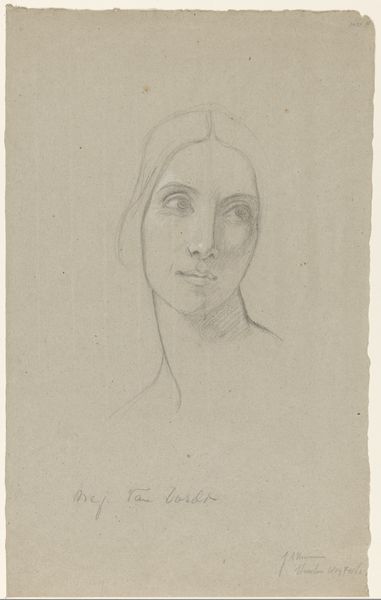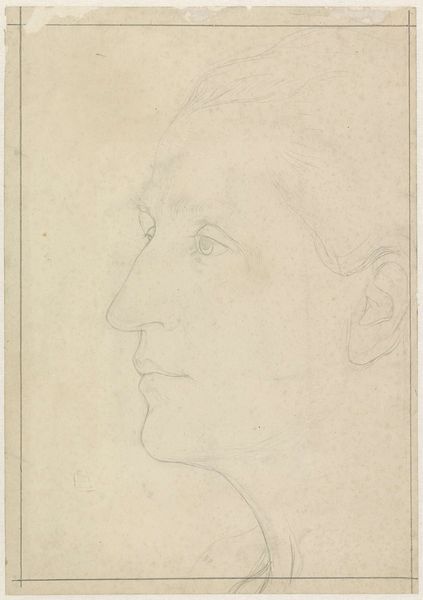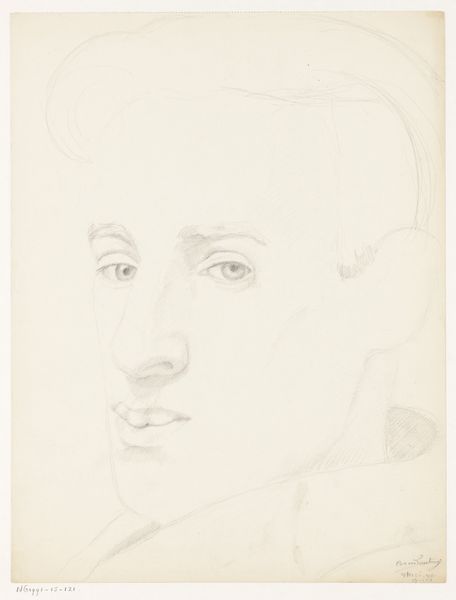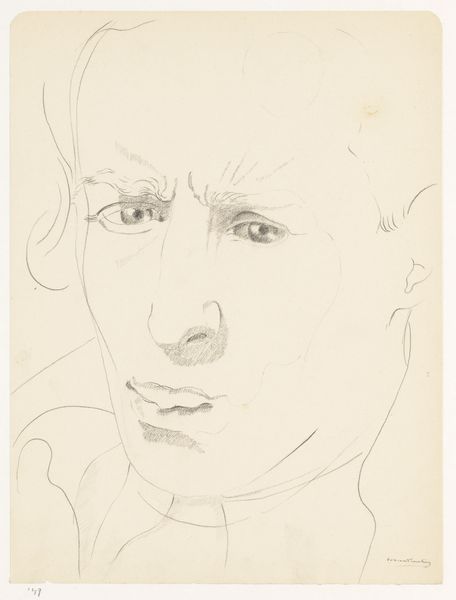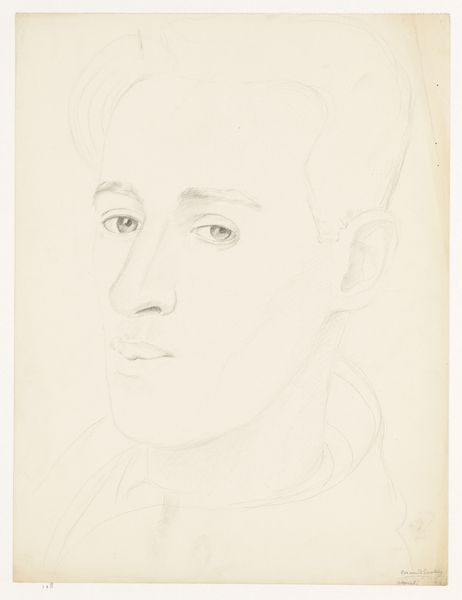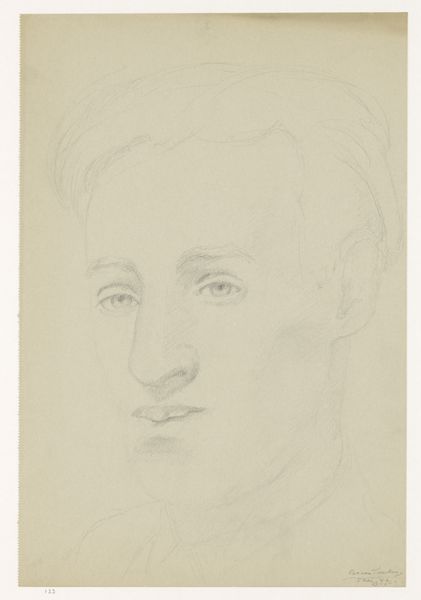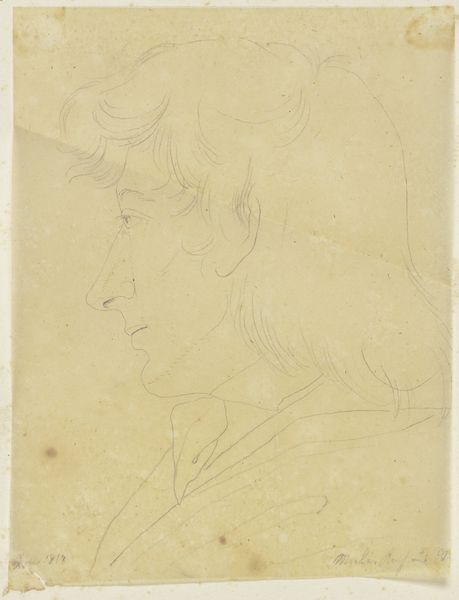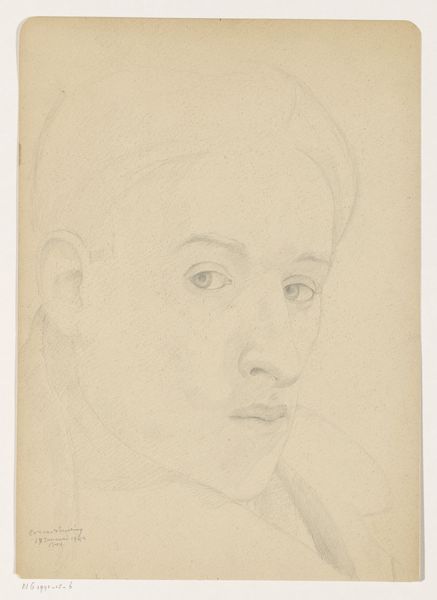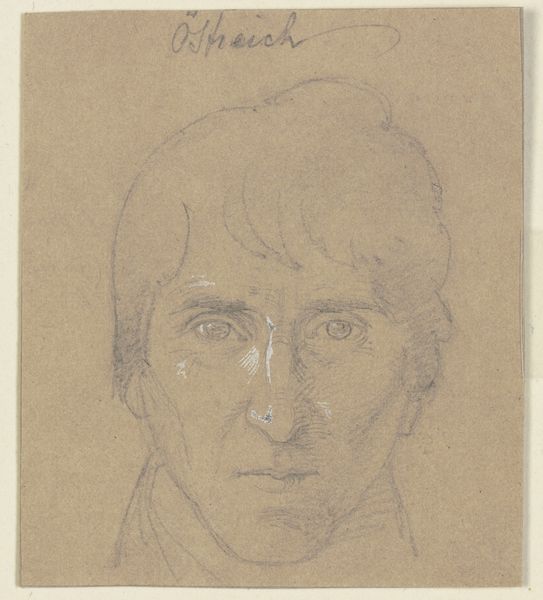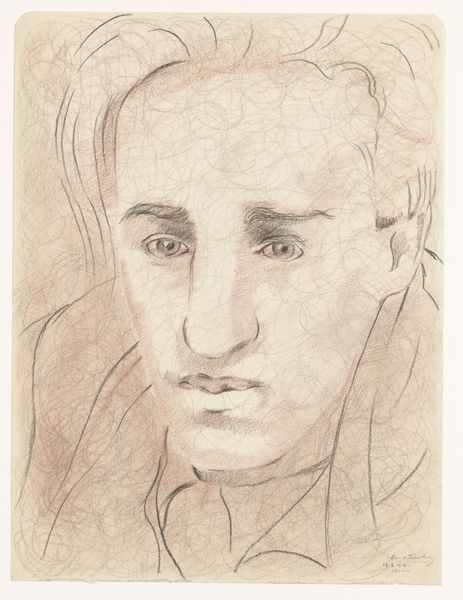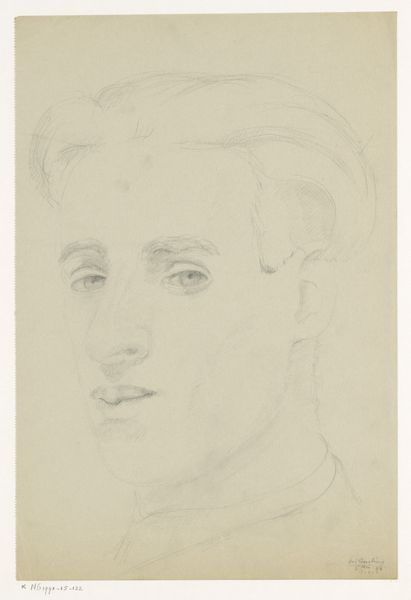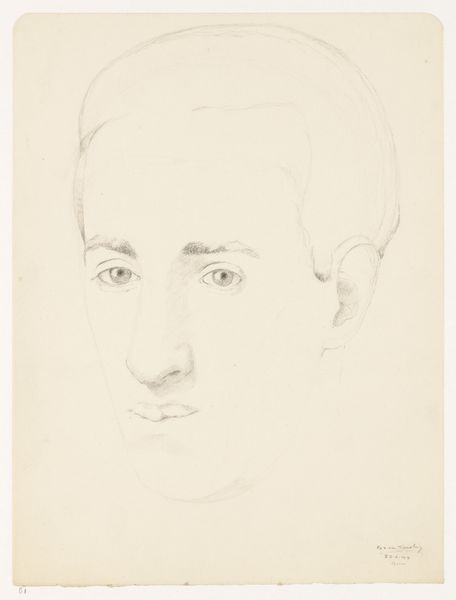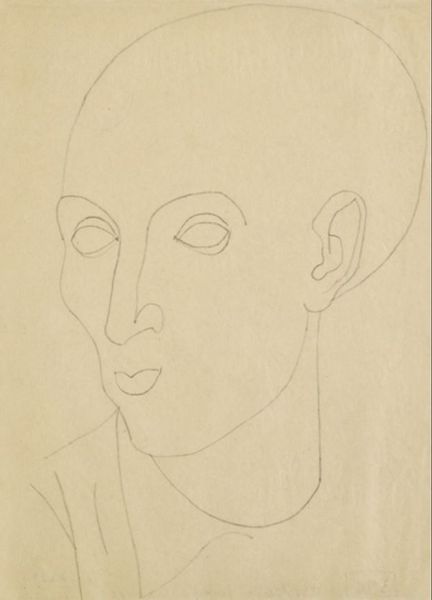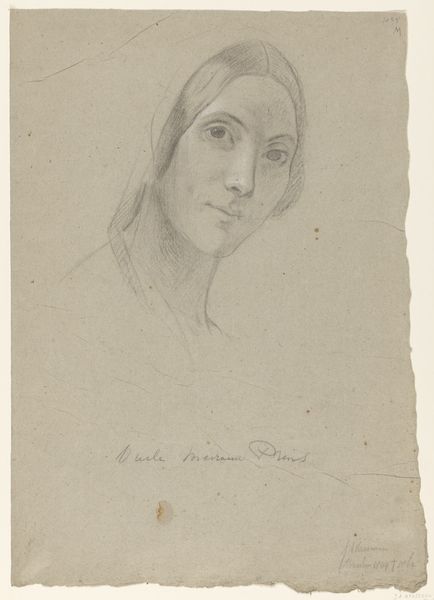
drawing, pencil
#
portrait
#
drawing
#
pencil drawing
#
pencil
#
portrait drawing
#
realism
Dimensions: height 562 mm, width 350 mm
Copyright: Rijks Museum: Open Domain
Curator: Before us is Jan Adam Kruseman's "Head of a Woman," a pencil drawing likely created between 1814 and 1862, now held in the collection of the Rijksmuseum. Editor: It’s arresting. There’s a sensitivity in the lines. The woman's gaze drifts upwards, almost as if in contemplation. A lightness of being suggested by the monochromatic values, despite the intensity of the features. Curator: The drawing reflects the broader context of portraiture gaining traction within burgeoning middle classes during the nineteenth century. Kruseman was part of an artistic lineage deeply intertwined with influential social circles. Works such as this are not merely studies in form, they were crucial to solidify status and forge networks. Editor: Indeed, but notice the rendering, particularly of the eyes. Kruseman employs delicate hatching to define volume and a surprisingly sparse, almost ethereal technique. The pencil barely kisses the surface. Her skin, though suggested, feels practically translucent, radiating a gentle warmth. There’s almost an idealistic approach despite the realism tag. Curator: Her upward glance is perhaps aspirational, symptomatic of social mobility accessible at the time, particularly for women hoping to attract favorable unions that elevated their social status through proximity to affluent families or industrialists commissioning such artworks. Editor: You might be right; from a formal view, the subtle play of light and shadow gives dimension, her head is rendered as both physically present and fleetingly ethereal. But this upward gaze evokes questions regarding societal roles that I would be more interested to explore in further works of Kruseman, maybe. Curator: It highlights the fascinating tension between personal expression and social expectation inherent in much nineteenth-century portraiture, a theme ripe for reinterpretation by modern audiences considering their complex visual heritage in public institutions. Editor: Absolutely, and whether one considers Kruseman’s work primarily as document or an emotional narrative, it leaves an indelible mark. Curator: Indeed. Its current presentation encourages critical reflection on art's purpose, particularly in reflecting individual vs collective values and history itself.
Comments
No comments
Be the first to comment and join the conversation on the ultimate creative platform.
